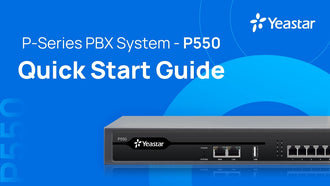

What is the best Headset for your business ?
- 09 Dec, 2018
When choosing a headset, the options seem infinite, but that’s just the apparent view of things. When you look closer and list your needs and priorities, finding the right one will be a piece of cake.
In the land of headsets, you have many categories and we will walk you through it all:
- Wireless VS Wired Headsets.
- The key factors for buying wired or wireless headsets.
- DECT VS Bluetooth Headsets.
- Monaural Vs Binaural Headsets.
- Explore ways of connectivity between IP phones and headsets.
- The compatibility map of IP phones and VT headsets.
1.Wireless VS Wired Headsets

First you need to know the difference between headsets models, if we take the connectivity as comparison factor we will find two main types of connectivity for headsets:
A- Wired Headsets

A wired headset is: an earpiece-microphone device that fits on your ear, and connects to your phone/PC via a wired cable.
Here are ALVOIP top-notch recommendations for the wired headsets models:
- vt-wired-headset-vt1000 omni-d
- vt-wired-headset-vt3000st
- vt-wired-headsets-vt5000unc-d
- vt-wired-headset-vt7000unc-d
- vt-wired-headsets-vt8000unc-d
- vt-uc-headset-vt5009unc
B- Wireless Headsets

A wireless headset is: an earpiece-microphone device that fits on your ear, and connects to your phone/PC using wireless technology (no cables needed).
2.The key factors for buying wired or wireless headsets.
When choosing between these two main types you need to ask yourself a few questions before deciding; are your employees going to be stationary for most of the time, or will freedom of motion during use be a factor? How long will the headset be employed at a time?
You should also think about the following 5 key factors:
1- Interference
Wireless headsets are more prone to electronic interference than their wired competitions.
2- Mobility
The wired headset is place-limited. It confines you to the square inches of your desk and computer. On the other hand, wireless headsets have a coverage range allowing employees to move around their office as long as they are still within coverage range of the headset the call will not be discounted.
3- Batteries and Charge Time
Wired headsets supply their own power via the cable and can operate continuously for as long as is necessary. Wireless headsets have limited operation time and eventually, you'll need to recharge the headset or replace its batteries.

4- Deployment Cost
Wired headsets generally are less expensive than their wireless counterparts and have none of the drawbacks that come from relying on a wireless signal.
5- Ongoing Costs
Wired headsets generally don't incur much ongoing cost - however when dealing with wireless, additional costs arise. If the headset utilizes batteries, you'll need to purchase them on a fairly regular basis in order to keep the headset in order.
3.DECT VS Bluetooth in wireless headsets

If you’ve been looking for wireless office headsets or even cordless office phones, you probably have come across the DECT and Bluetooth options. What are the differences?
DECT vs. Bluetooth: Security
You’re naturally concerned with the security of your wireless conversations, that’s why DECT uses 64-bit encryption, and Bluetooth has 128-bit encryption. So once the headsets are appropriately paired with their base stations, the chance of someone effectively listening in on a call is almost zero.
DECT vs. Bluetooth: The Distance Dilemma
One of the biggest differences between DECT and Bluetooth is that DECT’s wider range: around 100 meters (330 feet).
Bluetooth range depends on which class is used - for example:
- VT9602/VT9600 BT has a range of about 30 meters (98 feet).
- VT 9500BT is about 10 meters (33 feet).
DECT vs. Bluetooth: Connectivity Considerations
Another difference is that a DECT headset can only connect to one other device – namely the base station that provides a connection to the phone network.
A single Bluetooth device can connect to up to 8 other devices simultaneously. So the same Bluetooth headset could be used to connect to a user’s mobile phone, computer, tablet, and desk phone.
Al-voip.com recommends the below Bluetooth and wireless DECT models:
- vt-wireless-headset-vt9000-dect
- vt-wireless-usb-headset-vt9300dect
- vt-bluetooth-desk-phone-mobile-headset-vt9701bt
- vt-wireless-bluetooth-headset-binaural-vt9500
- vt-wireless-bluetooth-headset-vt9600

4.Monaural Vs Binaural Headsets

When shopping for a new headset, you'll find they come in two varieties: monaural and binaural. While these words sound impressive, they really only refer to the number of earpieces in the headset's design. The differences between the headsets themselves, however, make them well-suited to different environments and uses.
1.Monaural Headsets
Monaural headsets consist of a single earpiece and a microphone. These headsets are generally better suited to environments where you need to be aware of what's going on around you. A good example is in a call center, where an operator needs not only to be able to hear the customers on the phone, but also his co-workers.
Designs vary, but these are typically lightweight for ease of use. Full over-the-ear earpieces are less common than single earbuds or a small speaker.
2.Binaural Headsets
Binaural headsets include a full pair of headphones and a microphone. These headsets are optimal when you need to focus on the conversation itself and drown out surrounding environmental noise. An example would be during an online gaming session, where a player needs to hear her team-mates and the in-game audio, but would find anything going on in the room distracting.
Like monaural headsets, designs vary considerably. Over-the-ear binaural headsets are more common, including models that feature noise-cancellation, simulated surround sound and other premium features to enhance your experience.
5.Explore ways of connectivity between IP phones and headsets
We already discussed how wireless Dect headsets connect to different VoIP phones but what about connecting wired headsets to VoIP phones?
Most of VoIP phones connected to wired headsets via headset port found usually in phone rear

The headset cable has in its end different jacks, the most commonly used jacks with VoIP phones are:

Each phone model required a specific jack connection- for example for phones using different Rj09 models to connect to wired headsets

Most headsets factories now tend to manufacture corded headsets which mean that headsets are manufactured with a plug in its end that can suit different types of cords with any needed jack in its end – so consumers now can buy headset alone and choose the needed cord that will work with their IP Phones.
Check some of famous cords for wired headsets:
- vt-headset-convertor-qd-2-3-5mm-pc-plug
- vt-headset-convertor-qd-rj09-plug
- vt-headset-convertor-qd-usb-plug03
- vt-headset-cable-ehs1
- vt-headset-cable-ehs5
- vt-headset-cable-ehs10
-
Vt-headset-cable-ehs13
Check all VT cables models from here









